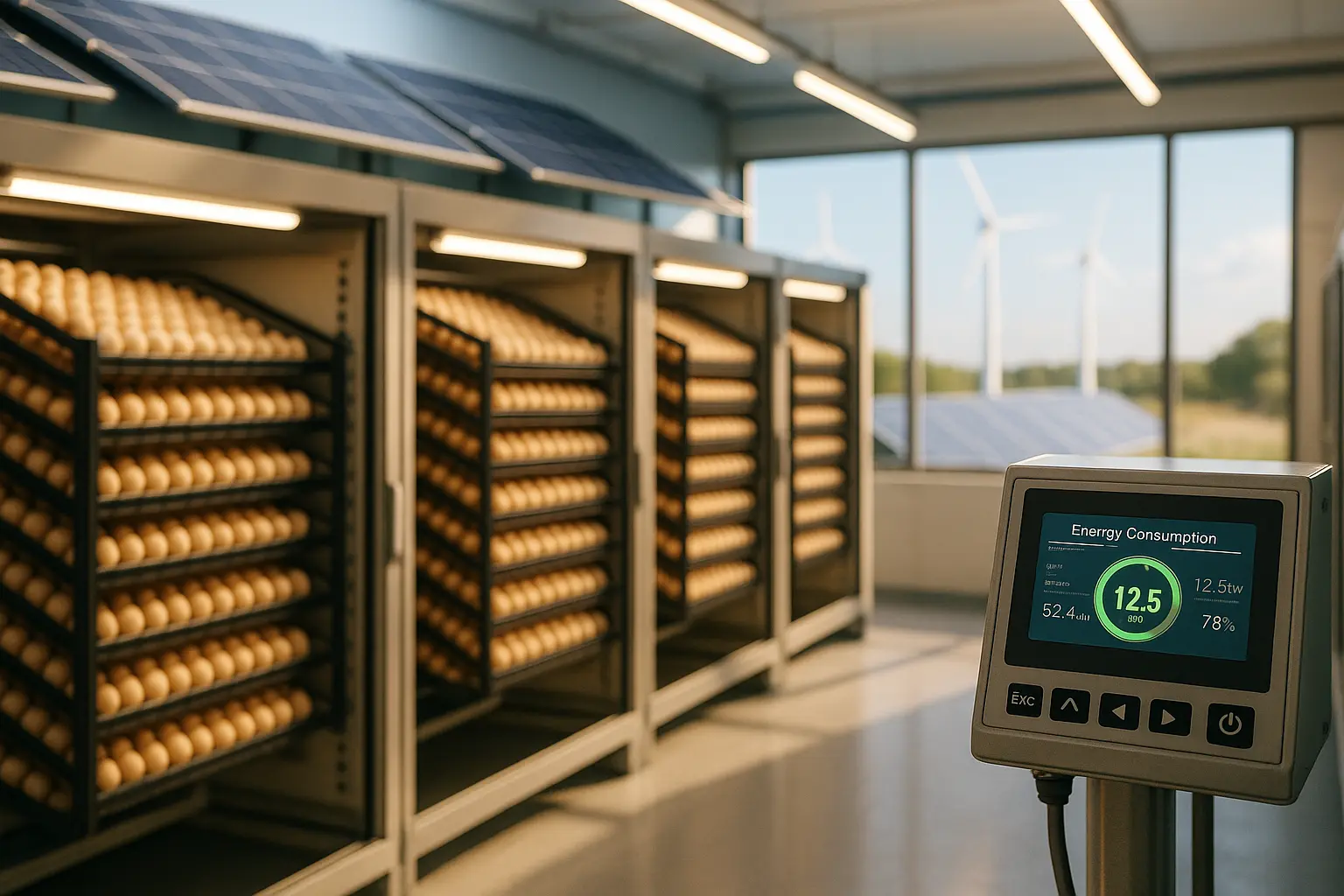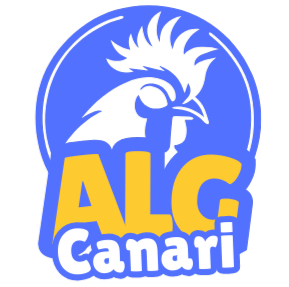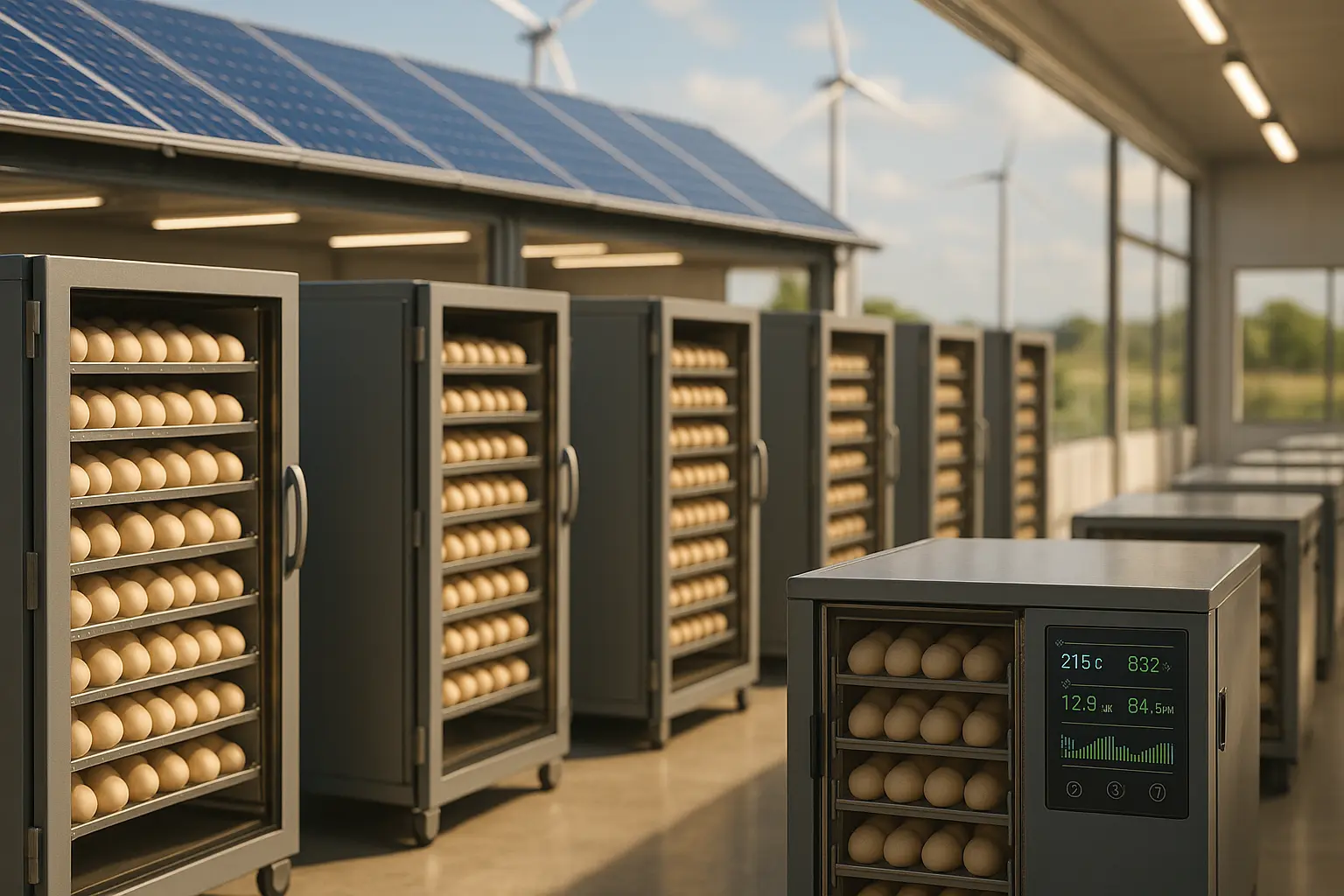In an era where sustainable practices are no longer optional but essential, optimizing energy consumption in hatcheries has become a priority for those in the agricultural sector. Our focus today is on how hatchery operators can streamline energy processes through meticulous audits and sustainable solutions. The aquaculture industry, much like poultry farming, relies heavily on water, feed, and energy systems for efficient production. However, with rising energy costs and mounting environmental concerns, we must adopt strategies that not only improve efficiency but also ensure a sustainable future.
We’ve all witnessed the significant impact of human activities on our planet, and as stakeholders in the agriculture sector, it’s crucial that we step up to reduce our emissions. By focusing on high-quality management and implementing innovative solutions, we can achieve cost-effective operations while contributing positively to the environment. Through this article, we’ll delve into practical solutions to optimize energy consumption, ensuring your hatchery thrives in today’s competitive market.
Understanding the Current Energy Landscape
Before diving into solutions, it’s essential to grasp the current energy landscape within hatcheries. Energy costs can occupy a significant portion of operational expenses, especially when coupled with inconsistent water and feed supplies. Aquaculture operations often require precise temperature control, lighting, and water circulation—all of which demand considerable energy input.
In our experience, energy consumption audits have proven invaluable in identifying inefficiencies. An energy audit comprehensively examines the usage patterns, identifies wasteful practices, and highlights potential areas for improvement. By understanding where we currently stand, we can better chart a path toward greater efficiency and sustainability.
Across the board, the integration of renewable energy sources, such as solar panels and wind turbines, has shown promise. Not only can these technologies reduce reliance on fossil fuels, but they also align with a commitment to environmental stewardship. Additionally, optimizing systems like heating and cooling, and employing smart management techniques, can significantly reduce energy costs and emissions.
By embracing modern solutions, we can ensure that hatcheries maintain their production levels without compromising the quality or integrity of the environment. Let’s look at how these audits and technologies can harmonize with sustainable practices to achieve our goals.
Implementing Sustainable Energy Solutions
Once we’ve identified inefficiencies through a comprehensive energy audit, the next step is implementing sustainable solutions tailored to our hatchery’s unique needs. Embracing green technologies is no longer a luxury; it’s a necessity in achieving long-term sustainability and cost efficiency.
-
Renewable Resources: Transitioning to renewable energy sources can substantially lower operational costs. Solar panels, particularly in sunny climates, offer an excellent return on investment by harnessing natural resources to power essential systems.
-
Smart Systems: Leveraging technology, such as smart thermostats and energy-efficient lighting, can enhance control over consumption patterns. Automated systems adjust energy usage based on real-time data, optimizing efficiency while maintaining quality.
-
Water Management: Efficient water usage is crucial in both aquaculture and poultry farming. Implementing high-quality filtration systems and recycling water can drastically reduce waste and cut down on costs.
-
Feed Efficiency: Optimal feed management not only supports high production levels but also contributes to energy conservation. By utilizing feed conversion ratios and minimizing waste, we can achieve greater efficiency.
Implementing these solutions requires a commitment to change and a willingness to invest in environmental and energy management strategies. By doing so, we can lay the groundwork for a more sustainable and profitable future.

Overcoming Challenges in Energy Efficiency
Navigating the challenges of energy optimization can be daunting, but each obstacle presents an opportunity for growth and innovation. As hatchery operators, it’s imperative to adopt a proactive mindset when faced with hurdles in energy management.
Cost Implications: Initial costs for renewable energy installations can be high. However, many regions offer incentives and tax breaks to ease the financial burden. These investments often pay off in reduced energy bills and increased efficiency over time.
Technical Barriers: Transitioning to modern technologies may require training and adaptation. It’s crucial to support our teams through this process, equipping them with the necessary skills to manage new systems effectively.
Regulatory Complexity: Navigating environmental regulations can be complex. Staying informed and compliant is essential to avoid unnecessary fines and ensure sustainable operations. Partnering with industry experts can provide valuable insights and guidance.
Market Fluctuations: The market for renewable energy sources and feed may fluctuate, impacting costs. Building strong relationships with suppliers and exploring long-term contracts can offer stability.
By addressing these challenges head-on, we can develop robust strategies that not only overcome hurdles but also transform them into opportunities for innovation and growth.
Monitoring and Evaluating Energy Efficiency
Sustaining energy efficiency requires ongoing monitoring and evaluation. This continuous process ensures that our hatchery’s operations are in sync with the latest advancements in energy management.
data analysis: Regularly reviewing energy consumption data helps identify patterns and areas for further improvement. Utilizing data analytics tools, we can pinpoint inefficiencies and make informed decisions.
Feedback Mechanisms: Encouraging feedback from team members provides valuable insights. Those on the ground often have firsthand knowledge of operational systems and can suggest practical improvements.
Benchmarking: Comparing our hatchery’s energy usage against industry standards helps gauge performance. By setting benchmarks, we can strive for continuous improvement and maintain competitiveness.
Innovation: Staying ahead in the market requires a commitment to innovation. Regularly updating systems and procedures ensures that energy efficiency is not stagnant but evolves with emerging technologies.
By cultivating a culture of evaluation and adaptability, we can maintain peak efficiency and sustainability, ensuring a positive impact on both our business and the environment.
Optimizing energy consumption in hatcheries is not merely an operational necessity; it’s a commitment to a sustainable future. By embracing audits, implementing renewable resources, overcoming challenges, and promoting a culture of continuous improvement, we can carve a path toward environmentally responsible and economically viable operations.
The journey toward sustainability requires dedication, creativity, and a willingness to adapt. As we continue to implement innovative solutions, we pave the way for a greener and more prosperous future—one where hatcheries thrive alongside a thriving planet. Together, let’s lead the charge towards more efficient, cost-effective, and environmentally friendly practices, ensuring that hatcheries remain a vital part of our agricultural landscape.
FAQ
What is the purpose of conducting an energy audit for a hatchery?
An energy audit aims to identify and evaluate the current energy consumption patterns of a hatchery. This process helps in spotting areas where energy use can be reduced or optimized, leading to cost savings and a decrease in the environmental impact.
How can energy-efficient equipment benefit a hatchery?
Investing in energy-efficient equipment, such as LED lighting or high-efficiency HVAC systems, can significantly reduce energy consumption. These technologies often require less power to operate, resulting in lower utility bills and a reduced carbon footprint.
What role does insulation play in reducing a hatchery’s energy consumption?
Proper insulation minimizes heat loss or gain, thereby maintaining optimal temperatures with less energy. This can lead to substantial savings on heating and cooling costs while ensuring a stable environment for the hatchlings.
How can renewable energy sources be incorporated into a hatchery’s operations?
Hatcheries can integrate renewable energy sources like solar panels or wind turbines to supplement or entirely replace traditional energy sources. This not only reduces reliance on fossil fuels but also promotes sustainability within the hatchery’s operations.
What are some behavioral changes that can contribute to energy savings in a hatchery?
Encouraging staff to adopt energy-saving habits—such as turning off lights and equipment when not in use, regularly maintaining machinery to ensure optimal performance, and monitoring energy consumption—can lead to noticeable reductions in energy use.

